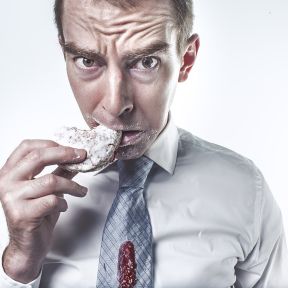
Compulsive Behaviors
Compulsive behaviors are actions that are engaged in repeatedly and consistently, despite the fact that they are experienced as aversive or troubling. Yet treatment can help to manage or overcome these difficult patterns.

Millions of people suffer from at least one compulsive behavior. And compulsive behaviors come in many forms, all of which can become debilitating or even dangerous.
Common activities that can develop into compulsions include shopping, hoarding, eating, gambling, sex, and exercise. Though some behaviors are easier to overindulge in than others, in reality, nearly any behavior has the potential to become a compulsion. Some people even talk compulsively.
There are also obsessive compulsions, in which a compulsive person performs certain behaviors to relieve underlying anxiety or other negative emotions. A well-known example is a person who checks and rechecks everything—if the stove is turned off, for instance, or if the door is locked. BFRBs (Body Focused Repetitive Behaviors) are related to obsessive compulsions, These include nail-biting, hair-pulling and skin-picking. In some cases, BFRBs are engaged in to decrease anxiety.
These behaviors rarely if ever decrease anxiety in the long run; in most cases, they only provide temporary relief. In extreme cases, compulsive behaviors start to take over a person's work, home, and social life, at the expense of normal activities.
OCD: Obsessive-Compulsive Disorder has two central elements. Obsessions are recurrent and persistent thoughts, urges, or images that are intrusive and cause distress; the person typically tries to ignore or suppress them. Compulsions are repetitive behaviors, such as handwashing, or mental acts, such as praying or counting, that the person uses in response to their obsessions, with the goal of neutralizing the threat and reducing distress—although they do not usually achieve those goals.
BFRBs: Body-focused repetitive behaviors are a set of disorders in which people repeatedly touch or groom themselves to a damaging degree. They might compulsively pull their hair, which is called trichotillomania, pick their skin, which is called dermatillomania or excoriation disorder, or bite their nails, which is called onychophagia.
Hoarding: Hoarding disorder involves feeling distressed by the idea of discarding possessions, which can lead to the accumulation of items and clutter around the person’s living space. Hoarding disorder also leads to significant impairments in the person’s life, such as creating an unsafe living environment or leading to conflict with family members.
Gambling: Gambling disorder is marked by persistent problematic gambling behavior that leads to significant distress. It involves meeting criteria such as needing to gamble with increasing amounts of money to achieve the desired excitement, becoming restless or irritable when attempting to stop gambling, making repeated attempts to cut back or stop gambling, lying to conceal the extent of gambling, and jeopardizing or losing a significant relationship or career opportunity due to gambling.
Shopping: Compulsive buying is characterized by excessive preoccupation or poor impulse control with shopping, and adverse consequences like financial problems or relationship conflict. Compulsive buyers tend to impulsively purchase items they can do without, conceal their shopping habits, experience a rush of excitement when they buy, and shop to relieve negative emotions. Compulsive shopping is not classified as an addiction in the DSM-5.
Internet: Compulsive internet use refers to people who become so dependent on using their phones or other devices that they lose control of their own behavior and suffer negative consequences. For example, the person may abandon other activities, such as working, face-to-face socializing, or sleeping. Compulsive internet use is not classified as an addiction in the DSM-5.
Online Gaming: Compulsive video gaming is a pattern of game-playing behavior that is difficult to control and that continues unabated despite serious negative consequences in other areas of the gamer’s life. Compulsive video gaming is not classified as an addiction in the DSM-5.
Sex: Compulsive sexual behavior involves feeling a lack of control over the ability to act on sexual fantasies and impulses, such as sending explicit texts or attempting to touch others without consent. This pattern of behavior is often referred to as hypersexuality or sex addiction. However, the concept of sex addiction is heatedly debated among clinicians, and it is not classified as a disorder in the DSM-5.
Eating: Compulsive overeating is also called Binge-Eating Disorder. Binges are defined by eating an abnormally large amount of food in a short time, with the feeling of being unable to control how much one is eating. The person might eat until they feel uncomfortably full, eat alone due to embarassment, and experience feelings of disgust and distress. A disorder is diagnosed when episodes of binging occur at least once a week for three months.
Exercise: It can be difficult to identify compulsive exercise because exercise is generally healthy, instills energy or happiness, and people are encouraged to do it. Like other activities, exercise becomes compulsive when it leads to distress or impairment in a person’s life or threatens their physical or mental health. Signs of compulsive exercise include prioritizing exercise over professional, social, or familial commitments, exercising while sick or injured, and losing interest in things other than exercise. Compulsive exercise is not classified as an addiction in the DSM-5.

When people engage in compulsions, they become trapped in a pattern of repetitive actions or senseless thinking from which it can be difficult to break free. Compulsions may have a genetic component—they are often seen in identical twins, for instance—but they also often arise after stressful events, trauma, or abuse.
Treatment is key for overcoming compulsive behaviors. Cognitive Behavioral Therapy, Exposure and Response Prevention, and other counseling approaches have proven particularly effective. Therapy may be augmented, especially in more severe cases, with antidepressants or anti-anxiety medication.
Exposure and Response Prevention is a frontline treatment for OCD. For the treatment, a therapist will gradually and safely expose a patient to the item or thought that they fear and then prevent the compulsive behavior that typically follows. For example, if a patient is afraid of germs and washes his or her hands until they are raw or hurt, the therapist will work with the patient to touch a doorknob without hand-washing after to get used to their fear and learn that they are still safe without the compulsive behavior.
A person’s symptoms tend to follow a chronic, fluctuating course over the lifetime, but treating BFRBs through therapy and/or medication can lead to improvements. One prominent form of therapy is Habit Reversal Training (HRT), which involves increasing a person’s awareness of engaging in BFRBs and associated urges to engage in BFRBs. With this awareness, the individual can engage in a behavior that competes with the BFRB, like clenching fists, clasping hands, or pressing hands into the lap whenever the urge to pick or pull arises. This training also involves receiving support from a valued person through prompts and praise for use of the competing movement.
Cognitive behavioral therapy, sometimes supplemented with antidepressant medication, are typically used to treat hoarding disorder. Cognitive behavioral therapy can help people explore and challenge the ideas that may give rise to their tendency to accumulate items, struggle to part with items, and create distress in their relationships.
People who compulsively gamble can be treated with individual therapy or support groups, sometimes with the addition of antidepressants, mood stabilizers, or other medications. Support groups such as Gamblers Anonymous can be helpful to those who value the structure and community of a 12-step program.














